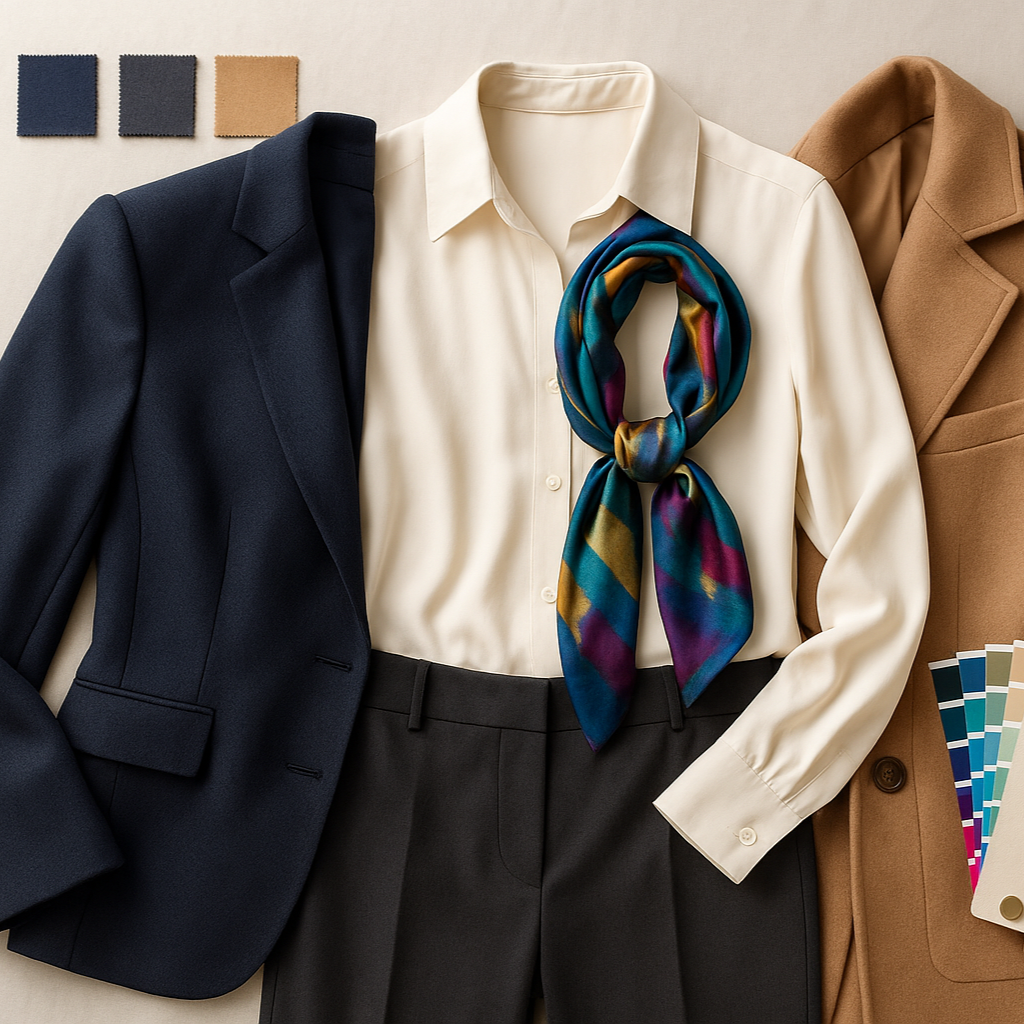How to Align Your Personal Style with Your Career Goals
Picture this. You are walking into a meeting where big decisions are made. Your mind is sharp, your presentation is ready, but your outfit feels off. Maybe the color washes you out, or the fit makes you pull at your sleeves every few minutes. That quiet discomfort can chip away at the confidence you need in the moment.
Your personal style is not just about looking polished. It is a visual extension of your skills, ambition, and self-awareness. When your style and career goals are aligned, you send a clear, consistent message about who you are and where you are headed. This alignment can influence how others perceive you, but more importantly, it shapes how you perceive yourself.
In this guide, we will explore how to create a personal style that supports your professional goals, whether you are a corporate mom navigating a busy schedule, a woman in career transition, or an executive balancing high-level responsibilities with personal commitments.
Why Your Personal Style Matters for Your Career
It Communicates Before You Speak
Before you say a word in a meeting, your appearance has already made an impression. The right outfit can project confidence, clarity, and competence. The wrong one can create distractions or dilute your message.
It Affects How You Show Up
When you feel good in what you are wearing, you are more likely to contribute ideas, take risks, and show leadership. On the other hand, discomfort in your clothing can subtly limit your presence and engagement.
It Signals Alignment
Consistency between your personal style and your career goals builds trust. If you are aiming for a leadership position, showing up in attire that reflects authority and polish reinforces your readiness for that role.
Define Your Career Goals Clearly
Before you decide what to wear, you need to know where you are going. Your personal style should work toward your goals, not against them.
Short-term goals could include acing an interview, stepping into a new leadership role, or making a strong impression at a networking event.
Long-term goals might involve positioning yourself as an industry expert, becoming a public speaker, or building your own brand.
Take a few minutes to write down the qualities you want people to associate with you in your career. Words like “strategic,” “creative,” or “approachable” can help you shape your style choices.
2. Audit Your Current Wardrobe
Look for Patterns
Open your closet and notice the colors, fabrics, and silhouettes you reach for most. Do they align with the image you want to project? If your wardrobe leans heavily toward casual pieces but you want to be seen as a corporate leader, there is a gap to address.
Identify the Misfits
We all have pieces that do not serve us anymore. Maybe they are from a past role or a different phase of life. Holding onto these can keep you tied to an outdated version of yourself. Letting them go makes room for clothing that reflects where you are headed.
3. Build a Style Framework
Your style framework is the set of guidelines you will use to choose outfits for work. It is not about strict rules. It is about creating consistency that supports your career goals.
Choose a Signature Color Palette
Colors have a powerful effect on how you are perceived. Navy and charcoal can project authority. Softer neutrals like camel or ivory can signal approachability. A pop of jewel tone can convey creativity. If you are unsure about your best colors, consider a professional color analysis.
Decide on Your Go-To Silhouettes
Identify shapes and cuts that make you feel both confident and comfortable. For example, a structured blazer with tailored trousers can communicate authority, while a midi dress with clean lines can balance professionalism with ease.
Consider Fabric and Quality
High-quality fabrics drape better and last longer, which saves money over time. They also send a subtle message about attention to detail. Look for pieces that maintain their shape and resist wrinkling, especially if your days are packed.
4. Dress for the Role You Want
Reflecting Leadership
If your goal is to step into senior management, choose outfits that show decisiveness. Structured tailoring, classic color combinations, and minimal but intentional accessories can communicate clarity and control.
Showing Creative Strength
If you are in a creative field or want to showcase innovation, you can experiment more with pattern, texture, or unexpected color pairings. The key is to keep it balanced so your outfit remains professional.
Navigating Career Transitions
When shifting industries or roles, your wardrobe can bridge the gap between where you have been and where you are going. Keep the foundational professional pieces, but gradually introduce new elements that align with your next step.
5. Make Your Style Work for Your Lifestyle
For Corporate Moms
Time is precious. Build a wardrobe with mix-and-match pieces so you can get ready quickly without sacrificing style. A few structured blazers, versatile dresses, and easy-care fabrics can make mornings smoother.
For Busy Executives
Invest in pieces that can go from boardroom to evening event. This might include a well-cut sheath dress, a tailored pantsuit, or a wrap dress in a neutral tone that can be dressed up with accessories.
For Women in Transition
If you are in a period of change, resist the urge to overhaul everything at once. Start with small, intentional purchases that help you feel more aligned without overwhelming your budget or your closet.
6. Use Accessories to Reinforce Your Message
Accessories are an easy way to add personality to a professional outfit.
Jewelry can be minimal and sleek for a modern, confident feel or bold and artistic for a creative impression.
Shoes can shift the tone of an outfit instantly. Pointed-toe heels might add authority, while refined flats signal approachability.
Bags should be both functional and polished. A structured tote in a neutral color is a versatile choice.
7. Maintain Your Professional Image
Consistency is key. Regularly assess your wardrobe to ensure it still matches your career direction. Keep clothing clean, pressed, and in good repair. This level of care shows that you value not only your work but also how you present yourself in it.
8. Give Yourself Room to Evolve
Your personal style should not be static. As you grow professionally, your style will likely shift too. The goal is not to lock yourself into one “look” forever, but to have a toolkit that you can adapt as your career progresses.
Bringing It All Together
Aligning your personal style with your career goals is about more than picking the right clothes. It is about building a visual identity that supports your ambitions, boosts your confidence, and tells your story without a single word.
When your wardrobe reflects where you are headed, you show up differently. You carry yourself with greater confidence. You communicate more clearly. You feel ready for the opportunities that come your way.
If you are ready to create a work wardrobe that feels effortless, confident, and aligned with your career goals, start small. Choose one area to update this month, whether it is finding your best colors, investing in a quality blazer, or editing your closet.
Bay Area Image Consulting Services
If you want guidance in building a professional image that feels authentic and powerful, let’s connect. Schedule a free discovery call or you can email me at hello@vogueandvoyage.com to learn more about personal styling sessions tailored for professional women.







